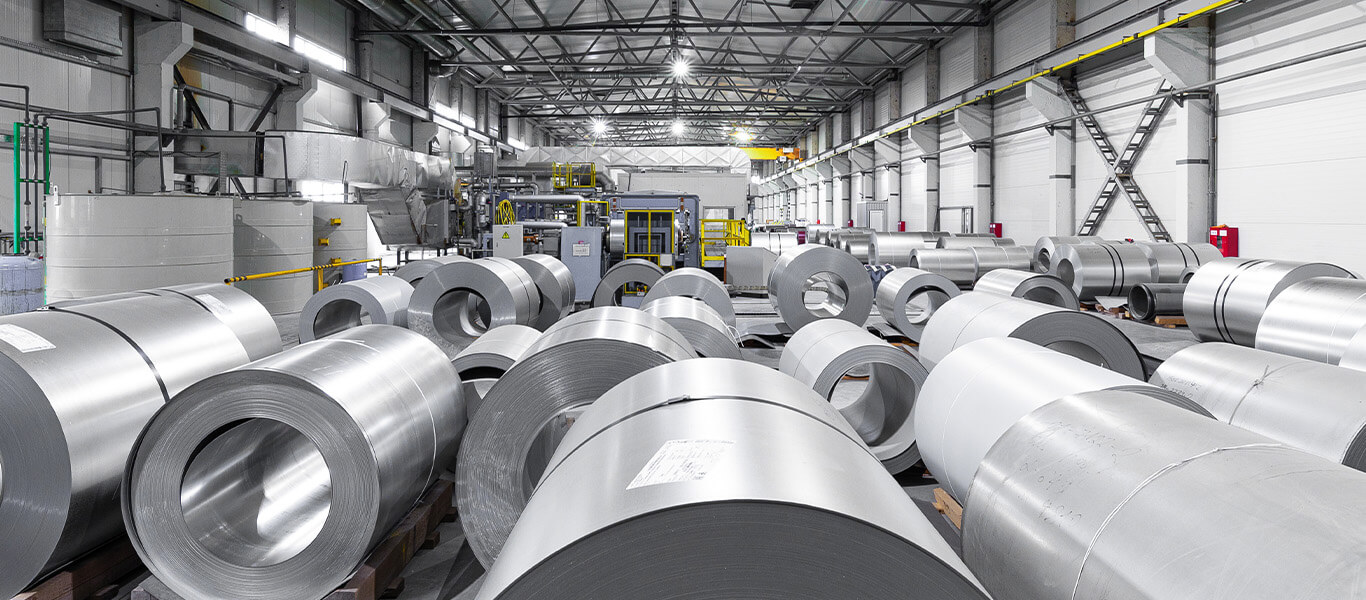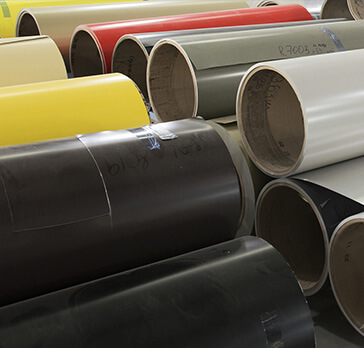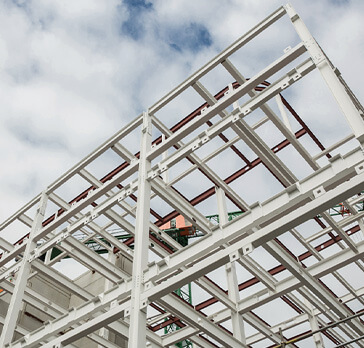Secondary steel refers to steel products that are manufactured from recycled or scrap steel materials rather than directly from iron ore. This category of steel encompasses various forms, including rebar, billets, sheets, and structural shapes, among others.
Unlike primary steel, which is produced from raw materials in integrated steel mills, secondary steel undergoes a recycling process, where scrap steel is melted down in electric arc furnaces (EAFs) or other steelmaking processes to create new products. This recycling aspect makes secondary steel a vital component of the circular economy, contributing to resource efficiency and sustainability in the steel industry.
Secondary steel plays a crucial role in global trade due to several factors. Firstly, it serves as a cost-effective alternative to primary steel, offering competitive pricing for manufacturers and consumers. This affordability makes secondary steel attractive for various industries, including construction, automotive, and machinery manufacturing, driving its demand in international markets.
Additionally, secondary steel’s environmental benefits, such as reduced energy consumption and greenhouse gas emissions compared to primary steel production, align with sustainability initiatives worldwide, further enhancing its appeal in global trade. Moreover, the flexibility of secondary steel production allows for agile responses to market demands and fluctuations, contributing to its resilience in the face of economic uncertainties.
In this article, we will delve into the intricacies of the global trade of secondary steel, exploring its trends, challenges, and opportunities.
Understanding Secondary Steel
A. Definition and Classification:
Secondary steel refers to steel products that are derived from recycled or scrap steel materials rather than being produced directly from iron ore. This category of steel encompasses various forms and grades, depending on the recycling process and the quality of the scrap material used. Secondary steel can be classified into two main categories:
Ferrous scrap-based steel: This type of secondary steel is produced primarily from ferrous scrap, which includes both industrial scrap generated during manufacturing processes and post-consumer scrap from discarded steel products. Ferrous scrap-based steel is commonly recycled in electric arc furnaces (EAFs) or other steelmaking processes, where the scrap is melted down and refined to produce new steel products.
Alloyed and specialty steel: In addition to conventional ferrous scrap-based steel, secondary steel can also include alloyed and specialty grades that incorporate specific alloying elements to enhance their mechanical properties or meet specialized requirements. These specialty steels may be derived from a combination of scrap materials and virgin raw materials, depending on the desired composition and performance characteristics.
B. Sources of Secondary Steel:
The sources of secondary steel vary depending on the type of scrap material and the recycling processes involved. Some common sources of secondary steel include:
Industrial scrap: Generated during manufacturing processes in industries such as automotive, construction, machinery, and appliances, industrial scrap comprises a significant portion of the secondary steel feedstock. This scrap can include trimmings, offcuts, and defective parts that are recycled back into the production process.
Post-consumer scrap: Derived from discarded steel products at the end of their service life, post-consumer scrap includes items such as automobiles, appliances, structural steel, and packaging materials. Recycling facilities collect and process post-consumer scrap through shredding, sorting, and melting processes to recover valuable steel for reuse.
Prompt scrap: Prompt scrap refers to new scrap generated during manufacturing processes, such as stamping, machining, and fabrication. This high-quality scrap material is often recycled directly back into the production process without undergoing extensive processing.
C. Characteristics and Properties:
Secondary steel exhibits a range of characteristics and properties that make it suitable for various applications across industries. Some key characteristics of secondary steel include:
Recyclability: One of the primary benefits of secondary steel is its recyclability, which allows for the efficient recovery and reuse of steel materials, reducing the need for virgin raw materials and minimizing environmental impact.
Versatility: Secondary steel comes in a variety of grades and forms, making it suitable for a wide range of applications, including construction, automotive manufacturing, machinery production, and consumer goods.
Cost-effectiveness: Compared to primary steel production, secondary steel production from scrap materials often entails lower energy consumption and production costs, resulting in competitive pricing for end-users.
Environmental benefits: Recycling scrap steel to produce secondary steel offers environmental benefits such as reduced energy consumption, lower greenhouse gas emissions, and conservation of natural resources compared to primary steel production processes.
Quality considerations: While secondary steel offers numerous benefits, maintaining consistent quality and performance can be a challenge due to variations in scrap composition, impurities, and processing techniques. Quality control measures and certification standards are essential to ensure the reliability and performance of secondary steel products for end-users.
Understanding the definition, sources, and characteristics of secondary steel is crucial for stakeholders involved in the global trade of steel products. By leveraging the unique properties and advantages of secondary steel, manufacturers, suppliers, and consumers can contribute to a more sustainable and resource-efficient economy.
Trends in Global Trade of Secondary Steel
A. Growth of Secondary Steel Market:
The secondary steel market has experienced significant growth in recent years, driven by various factors such as increasing demand for sustainable and cost-effective steel products, rising awareness of environmental concerns, and evolving regulatory frameworks. Key trends contributing to the growth of the secondary steel market include:
Sustainability initiatives: With growing emphasis on environmental sustainability and circular economy principles, there has been a heightened focus on recycling and reusing steel materials to minimize waste and conserve resources. As a result, the demand for secondary steel produced from recycled scrap has surged, driving expansion in the secondary steel market.
Urbanization and infrastructure development: Rapid urbanization and infrastructure development projects worldwide have spurred demand for construction materials, including steel products. Secondary steel, with its cost-effectiveness and versatility, has become a preferred choice for construction applications, fueling growth in the secondary steel market.
Automotive industry trends: The automotive industry is a significant consumer of steel, utilizing both primary and secondary steel in vehicle manufacturing. With increasing demand for lightweight, fuel-efficient vehicles, automakers are turning to advanced high-strength steels, including secondary steel grades, to meet performance and regulatory requirements.
Technological advancements: Advances in steelmaking technologies, particularly in electric arc furnace (EAF) technology and scrap processing techniques, have enhanced the efficiency and competitiveness of secondary steel production. These technological innovations have contributed to the growth of the secondary steel market by improving process efficiencies, reducing production costs, and expanding the range of available steel grades and products.
B. Regional Trends and Market Dynamics:
The global trade of secondary steel exhibits regional variations in market dynamics, driven by factors such as economic growth, industrialization, infrastructure development, regulatory policies, and trade patterns. Some key regional trends and market dynamics in the global trade of secondary steel include:
Asia-Pacific dominance: The Asia-Pacific region, particularly China, India, and Southeast Asian countries, accounts for a significant share of global secondary steel production and consumption. Rapid industrialization, urbanization, and infrastructure development in the region have fueled robust demand for secondary steel products across various end-user industries.
North America and Europe: Mature markets such as North America and Europe have well-established secondary steel industries supported by advanced recycling infrastructure and stringent environmental regulations. While demand for secondary steel remains strong in these regions, market growth is influenced by factors such as automotive industry trends, infrastructure investment, and trade dynamics.
Emerging markets: Emerging economies in Latin America, Africa, and the Middle East are experiencing growing demand for secondary steel driven by urbanization, infrastructure development, and industrialization. These regions offer untapped growth opportunities for secondary steel producers and exporters, albeit with challenges related to market volatility, regulatory compliance, and infrastructure constraints.
C. Factors Driving the Demand for Secondary Steel:
Several factors contribute to the increasing demand for secondary steel in global markets, including:
Cost-effectiveness: Secondary steel production from recycled scrap offers cost advantages over primary steel production, making it an attractive option for manufacturers seeking to optimize production costs and enhance competitiveness.
Environmental sustainability: The recycling of scrap steel to produce secondary steel aligns with sustainability goals and environmental regulations, driving demand from eco-conscious consumers, industries, and governments.
Technological advancements: Advances in steelmaking technologies and processes have expanded the range of available secondary steel grades and improved product quality, enhancing its suitability for diverse applications across industries.
Infrastructure development: Investments in infrastructure projects, such as construction, transportation, and utilities, drive demand for steel products, including secondary steel, as essential building materials for infrastructure development initiatives worldwide.
Regulatory policies: Government regulations and incentives aimed at promoting recycling, reducing carbon emissions, and conserving natural resources influence the demand for secondary steel and drive market growth in regions with stringent environmental standards and sustainability targets.
Understanding the growth drivers, regional dynamics, and factors shaping the demand for secondary steel is essential for stakeholders involved in the global steel industry to capitalize on emerging opportunities and navigate market challenges effectively. By leveraging these trends, stakeholders can position themselves strategically to meet evolving customer needs, drive innovation, and sustainably grow their businesses in the dynamic global market for secondary steel.
Challenges in the Trade of Secondary Steel

A. Quality Control and Consistency Issues:
One of the primary challenges in the trade of secondary steel is maintaining consistent quality and performance across various grades and products. The heterogeneous nature of scrap steel feedstock, coupled with variations in recycling processes and equipment, can lead to quality control issues such as impurities, inclusions, and alloy inconsistencies. Ensuring uniformity in product specifications and adherence to quality standards poses significant challenges for manufacturers and suppliers of secondary steel, impacting product reliability, customer satisfaction, and market competitiveness.
B. Regulatory Challenges and Trade Barriers:
Regulatory complexities and trade barriers present significant challenges for stakeholders involved in the trade of secondary steel across international markets. Tariffs, quotas, and import restrictions imposed by governments to protect domestic industries and address trade imbalances can disrupt supply chains, increase costs, and limit market access for exporters of secondary steel products. Compliance with diverse regulatory requirements, certification standards, and environmental regulations adds another layer of complexity to cross-border trade, necessitating careful navigation of regulatory frameworks and strategic risk management by industry players.
C. Environmental Concerns and Sustainability:
While secondary steel offers environmental benefits through recycling and resource conservation, the steel industry still faces environmental challenges related to energy consumption, emissions, and waste management. Steel production, whether from scrap or virgin raw materials, requires significant energy inputs and generates greenhouse gas emissions, contributing to climate change and air pollution. Additionally, environmental concerns such as water usage, waste disposal, and habitat destruction associated with steelmaking processes pose sustainability challenges for the industry. Addressing these environmental impacts and transitioning towards more sustainable steel production practices require investments in clean technologies, process optimization, and collaborative efforts across the value chain to mitigate environmental risks and enhance the sustainability of the secondary steel trade.
Opportunities in the Trade of Secondary Steel
A. Cost Advantages and Economic Benefits:
The trade of secondary steel offers significant cost advantages and economic benefits for stakeholders across the value chain. Compared to primary steel production, recycling scrap steel to produce secondary steel typically requires lower energy consumption and production costs, resulting in competitive pricing for end-users. Manufacturers and consumers can leverage these cost advantages to optimize production costs, enhance profitability, and gain a competitive edge in the marketplace. Additionally, the secondary steel trade contributes to job creation, economic growth, and sustainable development by supporting recycling industries, fostering innovation, and driving value-added manufacturing activities.
B. Innovation and Technological Advancements:
Innovation and technological advancements present promising opportunities for the trade of secondary steel, enabling industry players to enhance product quality, efficiency, and sustainability. Advances in steelmaking technologies, such as electric arc furnace (EAF) technology, scrap processing techniques, and process automation, have improved the efficiency and environmental performance of secondary steel production. Furthermore, innovations in material science, alloy development, and manufacturing processes enable the creation of new and advanced secondary steel grades tailored to meet evolving customer needs and industry requirements. By investing in research and development, fostering collaboration, and embracing innovation, stakeholders can unlock new growth opportunities and drive continued advancement in the secondary steel trade.
C. Integration of Secondary Steel in Circular Economy Models:
The integration of secondary steel in circular economy models presents opportunities to create a more sustainable and resource-efficient steel industry. By closing the loop on material flows and minimizing waste through recycling and reuse, secondary steel contributes to the circular economy principles of resource conservation, waste reduction, and value creation. Manufacturers, consumers, and policymakers can collaborate to develop circular economy strategies and initiatives that promote the efficient use of resources, extend product lifecycles, and minimize environmental impact. Moreover, the circular economy approach unlocks opportunities for new business models, partnerships, and revenue streams, driving innovation and sustainable growth in the trade of secondary steel while addressing global sustainability challenges.
Future Outlook

A. Projections for the Growth of the Secondary Steel Market:
Projections suggest continued growth in the secondary steel market, driven by increasing demand for sustainable steel solutions, urbanization, infrastructure development, and technological advancements in steelmaking processes. Emerging economies are expected to play a significant role in driving market expansion, supported by rising industrialization, urbanization, and infrastructure investments.
B. Emerging Trends and Potential Disruptions:
Emerging trends in the secondary steel market include the rise of advanced high-strength steels, increasing emphasis on lightweighting in automotive and aerospace industries, and the integration of digital technologies in steel production and supply chain management. Potential disruptions such as geopolitical tensions, trade disputes, and regulatory changes could impact market dynamics and require adaptive strategies from industry stakeholders.
C. Strategies for Stakeholders to Capitalize on Opportunities and Mitigate Risks:
Stakeholders can capitalize on opportunities in the secondary steel market by:
- Investing in innovation and technology to enhance product quality and efficiency.
- Diversifying market presence and product offerings to mitigate regulatory risks and trade barriers.
- Collaborating with industry partners, governments, and research institutions to drive sustainability initiatives and circular economy practices.
- Monitoring market trends, regulatory developments, and geopolitical risks to proactively adapt business strategies and mitigate risks.
Conclusion
Throughout this article, we explored the complexities of the global trade of secondary steel, examining trends, challenges, opportunities, and future outlook for the industry. Key points discussed include the definition and significance of secondary steel, regional dynamics, growth drivers, challenges faced by industry stakeholders, and strategies for navigating the evolving market landscape.
Secondary steel plays a vital role in global trade and economy, offering cost-effective, sustainable steel solutions for diverse industries and applications. Its contribution to resource efficiency, circular economy principles, and environmental sustainability underscores its importance in driving economic growth, innovation, and competitiveness in the global steel industry.
Navigating the global trade of secondary steel requires proactive strategies, collaboration, and innovation to address challenges, capitalize on opportunities, and sustainably grow businesses. By embracing technological advancements, sustainability initiatives, and market intelligence, stakeholders can navigate the complexities of the secondary steel trade and position themselves for long-term success in the dynamic global marketplace. To explore our wide range of secondary steel products, including Hot Rolled P&O Coils, Hot Rolled Coils, Cold Rolled Coils, and more, visit Pioneer Steel Limited.


